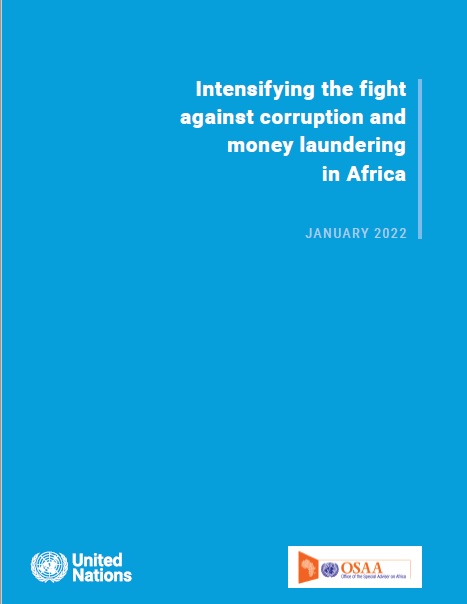Report on Food Security Challenges and Intra-African Trade in Eastern Africa
A new report provides a critical analysis of food security in Eastern Africa, advocating for enhanced intra-regional trade as a strategic approach to building resilience and achieving key Sustainable Development Goals (SDGs). The findings underscore the urgent need for coordinated action to address climate impacts, trade barriers, and underinvestment in the agricultural sector.
Climate Change Impacts on Agricultural Sustainability and SDG 2 (Zero Hunger)
The report identifies climate change as a primary driver of food insecurity in Eastern Africa, directly threatening the achievement of SDG 2 (Zero Hunger). Rising temperatures and erratic rainfall patterns have severely hampered agricultural output, leading to diminished productivity and widespread food shortages. Despite the region’s significant agricultural potential, this has resulted in a state where one in five people remains chronically undernourished.
Recommended Actions for Climate Resilience and Food Security
To mitigate these effects and advance SDG 13 (Climate Action), the report emphasizes the necessity of targeted investments and policy shifts. Key recommendations include:
- Adoption of climate-smart agricultural practices to enhance crop resilience.
- Investment in modern irrigation systems to counteract inconsistent rainfall.
- Implementation of soil conservation techniques to maintain land productivity.
Global Trade Dynamics and Regional Food Import Dependence
The report examines Africa’s position within global food trade, clarifying common misconceptions about its food import dependence. While the continent’s food trade deficit is significant, a detailed analysis reveals a more nuanced picture relevant to SDG 10 (Reduced Inequalities). The data indicates that Africa’s per capita food import dependence is approximately half that of Asia, and the majority of the continent’s deficit is concentrated in a few North African countries.
Key Findings on Eastern Africa’s Trade Profile
For Eastern Africa specifically, the collective food import deficit is relatively small, representing only 0.3% of the region’s total GDP. This finding suggests that while individual nations may face challenges financing food imports, the regional dependency is not as severe as often portrayed, presenting an opportunity for targeted, intra-regional solutions.
Unlocking Agricultural Potential to Advance SDG 8 (Decent Work and Economic Growth)
A central theme of the report is the vast, yet underdeveloped, potential of Eastern Africa’s agricultural sector. Mobilizing this potential is presented as a direct pathway to fostering SDG 8 (Decent Work and Economic Growth) and making progress on SDG 1 (No Poverty). The report calls for a multi-pronged strategy to transform the sector from one of subsistence to a driver of economic prosperity.
Strategic Imperatives for Agricultural Development
- Increased Investment: Substantial capital injection is required in agricultural research, technology, and infrastructure.
- Enhanced Regional Coordination: Greater collaboration among Eastern African nations is needed to harmonize agricultural policies and standards.
- Removal of Trade Barriers: Dismantling tariff and non-tariff barriers is crucial to stimulating cross-border trade in agricultural goods.
The Role of Trade Agreements in Fostering SDG 17 (Partnerships for the Goals)
The report highlights the importance of robust trade frameworks as a mechanism for achieving SDG 17 (Partnerships for the Goals). Existing regional trade agreements, alongside the transformative potential of the African Continental Free Trade Area (AfCFTA), are identified as critical tools for boosting intra-African agricultural trade. While not a panacea, strengthening these partnerships can create more resilient and self-sufficient food systems.
Identified Barriers to Intra-African Trade
To realize the full potential of these agreements, the report identifies key obstacles that must be addressed:
- Persistently high tariffs on agricultural products.
- Complex and restrictive non-tariff measures (NTMs).
- Systemic underinvestment in agricultural research and development (R&D).
Addressing these barriers is fundamental to enhancing productivity, reducing poverty (SDG 1), and ultimately ensuring food security (SDG 2) across Eastern Africa.
1. Which SDGs are addressed or connected to the issues highlighted in the article?
The article primarily addresses issues related to the following Sustainable Development Goals (SDGs):
-
SDG 2: Zero Hunger
This is the central theme of the article, which focuses on “food security challenges,” “chronic undernourishment,” “agricultural productivity,” and the development of “resilient food systems” in Eastern Africa.
-
SDG 13: Climate Action
The report explicitly links food security to climate change, discussing the “impact of climate change on Eastern Africa agriculture,” including “rising temperatures and erratic rainfall,” and recommends “climate-smart agricultural practices” as a mitigation strategy.
-
SDG 17: Partnerships for the Goals
The article strongly advocates for enhanced partnerships and cooperation, specifically through “intra-African trade.” It highlights the role of “regional trade agreements” and the “African Continental Free Trade Area (AfCFTA)” in achieving food security and economic development.
2. What specific targets under those SDGs can be identified based on the article’s content?
Based on the article’s discussion, the following specific targets can be identified:
-
SDG 2: Zero Hunger
- Target 2.1: By 2030, end hunger and ensure access by all people… to safe, nutritious and sufficient food all year round. The article directly addresses this by highlighting that “one in five people remain chronically undernourished” and the overall focus on “food security challenges.”
- Target 2.3: By 2030, double the agricultural productivity and incomes of small-scale food producers… The article calls for actions to “enhance agricultural productivity” and notes that the region’s agricultural sector “remains underdeveloped.”
- Target 2.4: By 2030, ensure sustainable food production systems and implement resilient agricultural practices that increase productivity and production… and strengthen capacity for adaptation to climate change… This is supported by the article’s emphasis on “climate-smart agricultural practices,” “investments in irrigation and soil conservation,” and fostering “robust and resilient food systems.”
- Target 2.a: Increase investment… in rural infrastructure, agricultural research and extension services… The article explicitly calls for “more investment in agriculture” and “increased investment in agricultural research and development (R&D).”
-
SDG 13: Climate Action
- Target 13.1: Strengthen resilience and adaptive capacity to climate-related hazards and natural disasters in all countries. The article connects directly to this target by discussing the need for “greater resilience” in the face of climate impacts like “rising temperatures and erratic rainfall” and promoting “climate-smart agricultural practices” to mitigate these effects.
-
SDG 17: Partnerships for the Goals
- Target 17.10: Promote a universal, rules-based, open, non-discriminatory and equitable multilateral trading system… The article supports this by advocating for the “removal of trade barriers,” addressing “high tariffs, non-tariff measures,” and leveraging the “African Continental Free Trade Area (AfCFTA)” to boost trade.
- Target 17.11: Significantly increase the exports of developing countries… The core argument of the article is to champion “enhanced intra-African trade” in agriculture, which directly aligns with increasing regional exports and reducing external import dependence.
3. Are there any indicators mentioned or implied in the article that can be used to measure progress towards the identified targets?
Yes, the article mentions or implies several indicators that can be used to measure progress:
-
Indicators for SDG 2
- Prevalence of undernourishment (Indicator 2.1.1): The article provides a direct measure by stating, “one in five people remain chronically undernourished.” Progress would be a reduction in this figure.
- Agricultural Productivity: While not a formal indicator number, the article implies its importance by noting “declining productivity” due to climate change and the goal to “enhance agricultural productivity.” This could be measured in terms of yield per hectare.
- Investment in Agriculture: The article points to “underinvestment in agriculture” and calls for “more investment,” implying that the level of public and private investment in the agricultural sector is a key metric.
-
Indicators for SDG 17
- Food Trade Deficit/Balance: The article discusses “Africa’s food trade deficit” and notes the region’s collective deficit is “a mere 0.3% of its total GDP.” Tracking this figure would indicate progress in intra-regional trade and food self-sufficiency.
- Tariff and Non-Tariff Barriers: The article identifies “high tariffs” and “non-tariff measures” as key barriers. Progress could be measured by the reduction or elimination of these barriers within the AfCFTA framework.
- Volume of Intra-African Trade: The central theme of boosting “intra-African agricultural trade” implies that the value and volume of this trade is a primary indicator of success.
4. Create a table with three columns titled ‘SDGs, Targets and Indicators” to present the findings from analyzing the article. In this table, list the Sustainable Development Goals (SDGs), their corresponding targets, and the specific indicators identified in the article.
| SDGs | Targets | Indicators (Mentioned or Implied in the Article) |
|---|---|---|
| SDG 2: Zero Hunger |
2.1: End hunger and ensure access to food.
2.3: Double agricultural productivity. 2.4: Ensure sustainable and resilient food production systems. 2.a: Increase investment in agricultural research and development. |
– Prevalence of undernourishment (“one in five people”).
– Level of agricultural productivity (mentioned as “declining” and needing to be “enhanced”). – Adoption of climate-smart agricultural practices. – Level of investment in agriculture and R&D (mentioned as “underinvestment”). |
| SDG 13: Climate Action | 13.1: Strengthen resilience and adaptive capacity to climate-related hazards. | – Implementation of climate-smart agricultural practices to build resilience. |
| SDG 17: Partnerships for the Goals |
17.10: Promote an open and equitable multilateral trading system.
17.11: Significantly increase the exports of developing countries. |
– Level of tariffs and non-tariff measures on agricultural goods.
– Volume and value of intra-African agricultural trade. – Regional food trade deficit (mentioned as “0.3% of its total GDP”). |
Source: africarenewal.un.org






